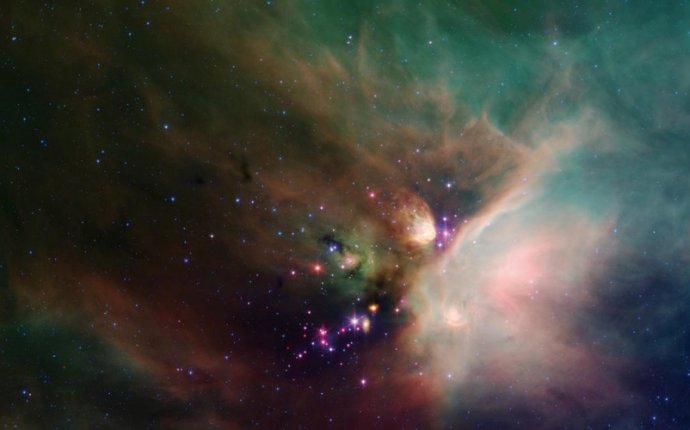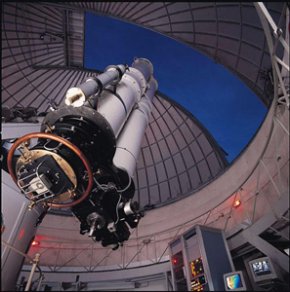
Astronomy in London
 The course extends over two academic years, starting in late September each year.
The course extends over two academic years, starting in late September each year.
First-year lectures will be given by the Department of Physics and Astronomy, at University College London in Gower Street (The exact location will depend on central booking of lecture spaces which cannot be confirmed until the start of September.) This is a convenient central London location, easily accessible by public transport. Classes will be held on Tuesday evening each week during the academic Term. The hours will be from 6.00 pm to 9.00 pm with breaks for refreshments.
The programme of lectures will be interspersed with discussion sessions and problem classes. After an introductory induction evening in the first week, classes will run for eleven weeks in each of the two teaching terms each year.
Lecture Course Syllabus
Two modules will be taught in each term, as follows:
| First Year, Term 1 | Foundations of astronomy. |
| Techniques in astronomy. | |
| First Year, Term 2 | The Solar System. |
| The Sun and stars. | |
| Second Year, Term 1
|
Extra-solar planets and the search for life. |
| Interstellar astronomy. | |
| Second Year, Term 2
|
High-energy astrophysics. |
| Extragalactic astronomy and cosmology. |
The three lectures each evening will normally be one on one module, and two on the other module running that term, arranged to give equal numbers of lectures in the two modules over the term.
Practical Sessions
Students will attend practical classes at the University College London Observatory in groups. Each student will have eight evenings at the Observatory in each year of the Certificate, attending at three-weekly intervals for four weeks in each of the teaching terms. Classes run from 6.30 to 9.30 pm, on WEDNESDAY evenings in the first Term and the second Term of the Certificate.
The weather can be uncertain. On clear nights full use will be made of the Observatory's suite of telescopes under appropriate supervision. Students will be instructed in the use of telescopes and the types of observation that can be made. For cloudy nights there is a good range of other practical activity, including the use of catalogues, star charts and images, and computer-based packages.
Astronomy Dissertations
At the start of the Session, students in the first and second years select a topic of their own choice or from a list provided, and research and write an extended essay on their specific area of Astronomy or Astrophysics of length about 4, 000 words. The research is expected to use the UCL Library (both physical and electronic resources) as well as other sources such as the Internet. For both years, the final deadline for submission will be the final day of Term 2.
Provisional Syllabus for Lecture Courses
YEAR ONE |
First Term |
|
Foundations of Astronomy An overview of modern astronomy, providing an introduction to the night sky, stars, galaxies and cosmology. Techniques in Astronomy Optical and mechanical properties of telescopes; recent developments in large mirrors, adaptive and active optics. Diffraction effects in telescopes and instruments; Rayleigh Criterion, Airy function. High- and low-resolution spectroscopy; spectroscopic diagnostics in astrophysics. Radio Astronomy. Instruments and detector systems in space, including infrared, ultraviolet and X-ray missions). |
Second Term |











